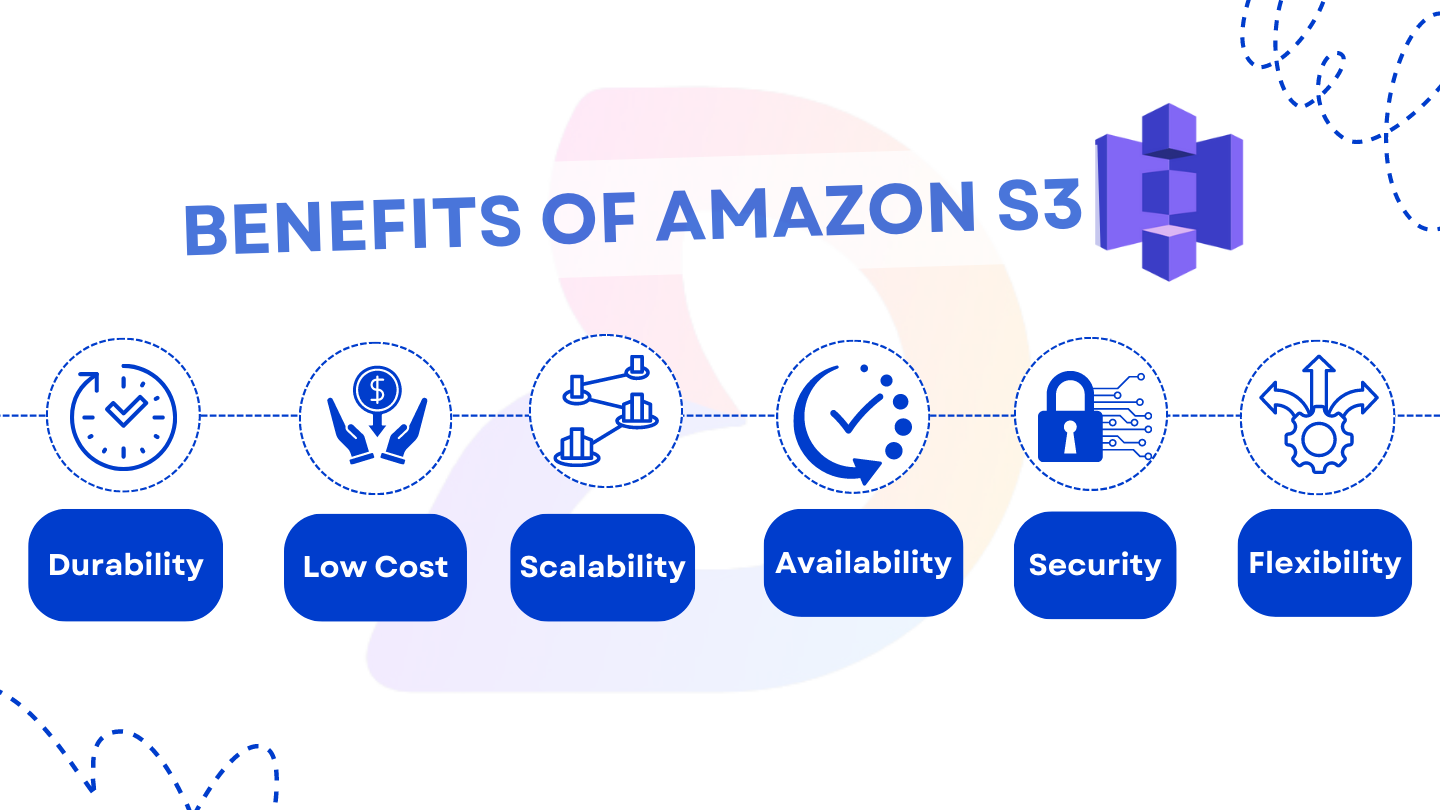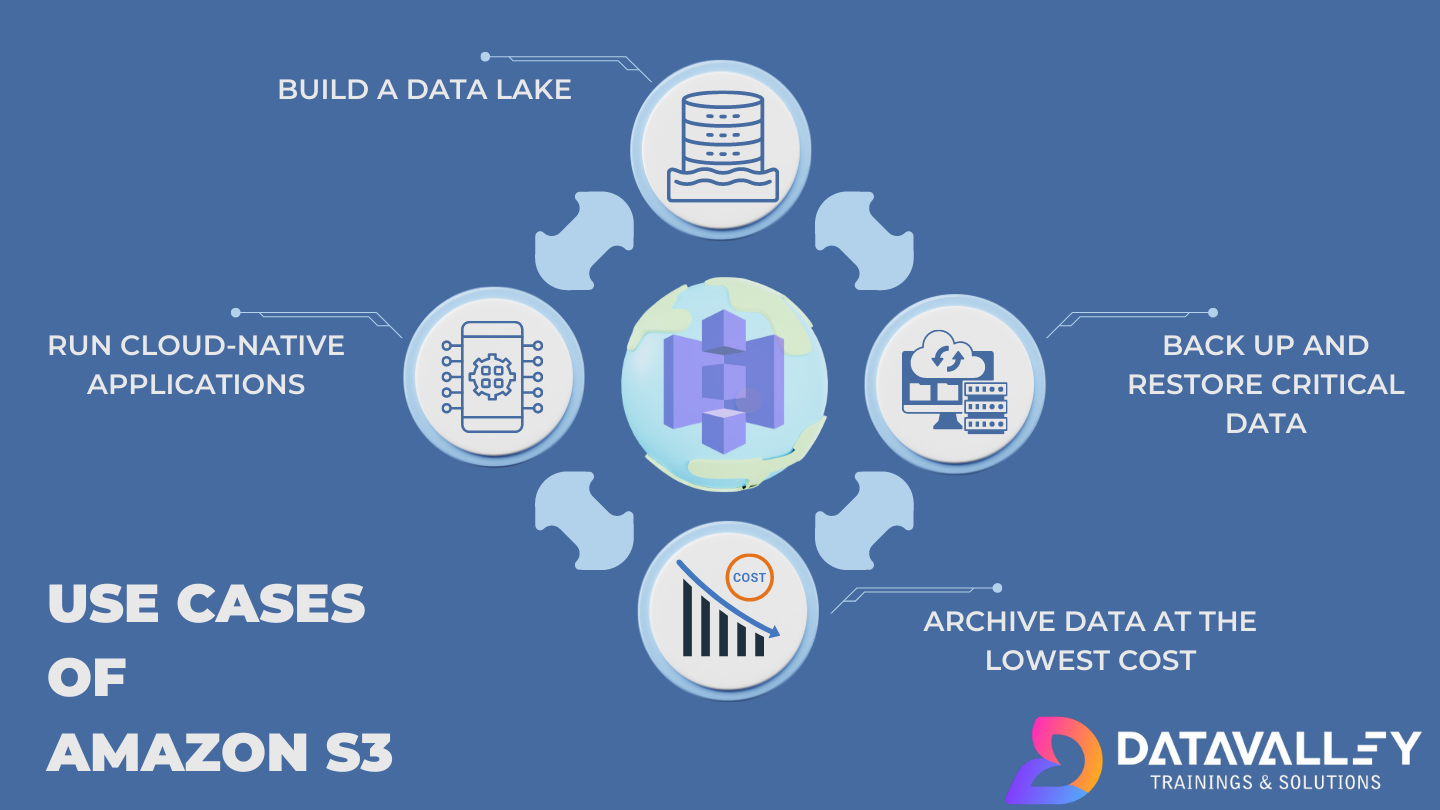Introduction
In the realm of cloud storage, Amazon Simple Storage Service S3 has emerged as a popular and widely adopted solution. It offers businesses scalable, durable, and highly available object storage that can be seamlessly integrated with a variety of applications and services. This article serves as a comprehensive guide to Amazon S3, exploring its features, benefits, use cases, and best practices. By the end of this article, you will have a solid understanding of how to leverage the power of Amazon S3 for your storage needs.

Table of Contents
- What is Amazon Simple Storage Service (S3)?
- Key Features of Amazon S3
- Benefits of Amazon S3
- Use Cases for Amazon S3
- How Amazon S3 works
- Security and Compliance in Amazon S3
- Cost Optimization with Amazon S3
- Amazon S3 Integration with Other AWS Services
- Conclusion
What is Amazon Simple Storage Service (S3)?
Amazon Simple Storage Service (S3) is an object storage service offered by Amazon Web Services (AWS). It provides a scalable and highly available storage infrastructure for storing and retrieving any amount of data from anywhere on the web. With Amazon S3, businesses can store and retrieve virtually any type of data, including images, videos, documents, and application backups.
Key Features of Amazon S3
Amazon S3 offers a wide range of features that make it a versatile and powerful storage solution:

Storage Classes:
Amazon S3 offers a range of storage aws classes, including Standard, Intelligent-Tiering, Glacier, and more, allowing you to choose the right balance between cost and access speed based on your data’s usage patterns.
Storage Management:
Amazon S3 provides comprehensive storage management features, allowing you to organize and categorize your data with customizable metadata, tags, and lifecycle policies, simplifying data organization and optimizing storage costs.
Storage Analytics and Insights:
Amazon S3 offers analytics and reporting capabilities, such as Amazon S3 Storage Lens and S3 Inventory, providing visibility into storage usage, access patterns, and cost breakdowns, enabling you to make informed decisions and optimize storage efficiency.
Access Management:
Amazon S3 provides robust access management tools, including AWS Identity and Access Management (IAM), bucket policies, and Access Control Lists (ACLs), allowing you to control and manage access to your storage resources, ensuring data security and compliance.
Data Processing:
Amazon S3 integrates seamlessly with AWS data processing services like AWS Lambda, Amazon EMR, and Amazon Athena, enabling you to perform data transformations, analytics, and extract valuable insights directly from your stored data.
Performance:
Amazon S3 offers high-performance capabilities, such as Multi-Part Upload for large objects, Transfer Acceleration for faster data transfers, and byte-range fetches for efficient partial file retrieval, ensuring optimal performance for your storage operations.
Benefits of Amazon S3
Implementing Amazon S3 brings several benefits to businesses:

Durability:
Amazon S3 provides an exceptional durability rate of 99.999999999%, ensuring your data is highly protected and safe from loss.
Low Cost:
With various storage classes to choose from, Amazon S3 allows you to optimize your storage expenses by selecting the most suitable option based on your data access patterns.
Scalability:
Amazon S3 seamlessly scales your storage resources up or down, enabling you to meet changing storage demands without hidden fees or overage charges.
Availability:
With a guarantee of 99.99% object availability, Amazon S3 ensures that your data is readily accessible whenever you need it.
Security:
Amazon S3 offers a robust security framework, including access management tools and encryption features, to protect your data and ensure its confidentiality and integrity.
Flexibility:
Amazon S3 is versatile and adaptable, making it suitable for a wide range of use cases such as data storage, backup, content delivery, archiving, and more.
Use Cases for Amazon S3
Amazon S3 is widely used across various industries and use cases:

Build a Data Lake:
Amazon S3 serves as a fundamental component for building a data lake architecture. It provides a scalable and durable storage solution, allowing businesses to store vast amounts of structured and unstructured data in its native format, enabling data analytics, machine learning, and other data-driven applications.
Back up and Restore Critical Data:
Amazon S3 is an excellent choice for securely backing up critical data. Its durability and availability ensure data protection, while features like versioning and lifecycle policies facilitate easy data restoration and recovery when needed.
Archive Data at the Lowest Cost:
With its cost-effective storage classes designed specifically for data archiving, Amazon S3 enables businesses to archive infrequently accessed data at the lowest cost possible. By leveraging lifecycle policies, organizations can automatically transition data to the appropriate storage class, optimizing cost savings while ensuring data availability.
Run Cloud-Native Applications:
Amazon S3 seamlessly integrates with various AWS services, making it an ideal choice for running cloud-native applications. It provides a reliable and scalable storage foundation for applications, enabling seamless data access, content delivery, and serving as a repository for application data, media files, logs, and more.
How Amazon S3 works
Amazon S3 (Simple Storage Service) is a highly scalable and secure cloud storage service provided by Amazon Web Services (AWS). It allows individuals and organizations to store and retrieve large amounts of data, such as documents, images, videos, and application backups, over the internet.
Here’s an overview of how Amazon S3 works:

Security and Compliance in Amazon S3
Security and compliance are essential considerations when using Amazon S3. Here are key aspects related to security and compliance in Amazon S3:
Access control:
Amazon S3 provides various mechanisms to control access to your data. You can use AWS Identity and Access Management (IAM) to manage user permissions and define granular access policies. Access Control Lists (ACLs) and Bucket Policies can also be used to manage access at the bucket and object level.
Encryption:
S3 supports encryption at rest and in transit. You can enable server-side encryption to automatically encrypt your data when stored in S3. Amazon S3 offers different options for encryption, including using Amazon S3 Managed Keys (SSE-S3), AWS Key Management Service (AWS KMS) Managed Keys (SSE-KMS), or customer-provided keys (SSE-C). Additionally, you can use SSL/TLS to encrypt data during transit between your applications and S3.
Secure data transfers:
To ensure secure data transfers, use HTTPS (SSL/TLS) when interacting with S3. This helps protect data in transit from interception or tampering.
Access logs:
Enable S3 server access logging to capture detailed information about requests made to your bucket. This can help with monitoring, troubleshooting, and auditing activities related to your data.
Versioning:
Enable versioning on your S3 bucket to retain multiple versions of an object. This can help with data recovery, accidental deletion prevention, and meeting compliance requirements.
Data governance and compliance:
Amazon S3 provides features to help with data governance and compliance. This includes integration with AWS CloudTrail, which logs API calls and allows you to track and monitor S3 activities. You can also leverage AWS Config to assess compliance against predefined or custom rules for S3 configurations.
Auditability and logging:
AWS CloudTrail captures API activity across your AWS account, including S3 operations. It provides detailed logs that can be used for auditing, compliance, and security analysis purposes.
Compliance programs:
Amazon S3 supports various compliance programs, including but not limited to, GDPR, HIPAA, FedRAMP, and PCI DSS. By leveraging these programs, you can ensure that your use of S3 aligns with industry-specific or regional compliance requirements.
Data retention and deletion:
Establish proper policies and processes for data retention and deletion. This is crucial for compliance with data protection regulations and to avoid storing unnecessary data, thereby reducing costs.
Data classification and access controls:
Classify your data based on sensitivity and implement appropriate access controls accordingly. This helps ensure that only authorized individuals or systems have access to sensitive data.
Note: It’s important to regularly review and update your security measures and compliance practices to stay up to date with evolving best practices, regulations, and security threats.
Cost Optimization with Amazon S3
To optimize costs while using Amazon S3, businesses can follow these strategies:
cost optimization strategies for Amazon S3:
Storage classes:
Choose the appropriate storage class based on your data’s access patterns and requirements to balance cost and performance.
Lifecycle policies:
Automate the transition of objects to lower-cost storage classes or delete them based on predefined rules.
Data compression:
Compress data before storing it in S3 to reduce storage costs.
Data deduplication:
Identify and remove duplicate data to reduce redundant storage and save costs.
Object lifecycle expiration:
Set expiration dates for objects that have a limited lifespan or are no longer needed to avoid unnecessary storage costs.
Monitoring and optimization:
Regularly monitor S3 usage, analyze data access patterns, and optimize storage usage accordingly.
Data transfer costs:
Minimize data transfer costs by using AWS services within the same Region.
Cross-Region replication:
Carefully evaluate costs associated with cross-Region replication and use it selectively for critical data.
Object size optimization:
Consolidate smaller objects into larger ones to reduce the number of individual requests and optimize storage costs.
By implementing these strategies, you can effectively manage your Amazon S3 costs and ensure efficient storage usage.
Amazon S3 Integration with Other AWS Services
Amazon S3 seamlessly integrates with various AWS services, enabling businesses to build robust and scalable applications:
AWS Lambda
Using Lambda with S3 triggers allows businesses to build serverless applications that automatically execute code in response to S3 events.
Amazon CloudFront
Integrating S3 with CloudFront enables businesses to deliver content globally with low latency and high data transfer speeds.
Amazon Athena
Athena allows for querying data stored in S3 using standard SQL, making it easy to perform ad hoc analysis on large datasets.
Amazon Redshift
S3 can be used as a data source for Amazon Redshift, enabling businesses to perform high-performance analytics on large-scale data.
Conclusion
Amazon Simple Storage Service (S3) is a powerful and flexible object storage solution that offers businesses scalability, durability, and ease of use. By leveraging its features, businesses can store and retrieve data at any scale while optimizing costs and ensuring high availability. In this comprehensive guide, we explored the key features, benefits, use cases, best practices, and integration possibilities of Amazon S3. Armed with this knowledge, you are well-equipped to harness the potential of Amazon S3 for your storage needs and unlock new possibilities for your applications and services.
Want to know more about 1.aws interview questions.2. IAM interview questions





